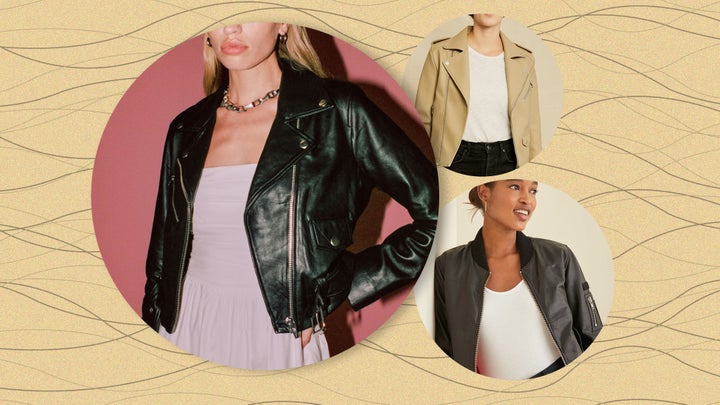
The fashion industry is responsible for more than 4% of the planet’s greenhouse gas emissions and is one of the largest contributors to planetary waste. It’s also notorious for operating a supply chain that’s incredibly opaque and riddled with unethical labor conditions, poverty wages and toxic product sourcing.
This is all according Remake and their 2021 Fashion Accountability Report, an annual initiative that consults and scores fashion companies on rigorous criteria such as traceability, environmental justice and diversity.
Katrina Caspelich is the director of marketing for Remake, a nonprofit organization that empowers citizens to advocate for fair wages and eliminate environmental injustice in the fashion industry. Caspelich spoke with HuffPost about what sustainable fashion really means and what it needs to look like in order to be truly ethical.
“Sustainable fashion usually means eco-friendly practices in the fashion industry, referencing the approach of designing, producing and consuming clothes that respect the planet by causing little to no damage, and therefore sustaining the environment,” Casepelich said. “We define this term holistically by looking at both the planetary and human impact. We look at the industry’s practice of sustaining the healthy lives of the people who make our clothes through living wages, safe work conditions and maker well-being.”
For us consumers, this means gaining a better understanding of the oft complex supply chain and taking the initiative to know where our clothes come from at every step of its process, from the raw materials being used to make a garment to the moment an item gets into your hands. But according to Orsola de Castro, the founder and global creative director of Fashion Revolution (one of the largest initiatives that campaigns for fashion industry accountability) this can be more difficult than it seems.
“Understanding the supply chain implies transparency and public disclosure. The fashion industry is deregulated, meaning that it has no obligation to actually give its customers the information on the provenance, contents and materials,” de Castro said.
De Castro described leather as one of the most problematic materials. It also happens to be largely in demand.
“Leather is linked to deforestation. It’s also by far the most polluting processes when it comes to treating and dyeing, and one of the biggest supply chain offenders. For instance, in Bangladesh, the leather tanneries are extraordinarily dangerous for the people who work in them,” de Castro said.
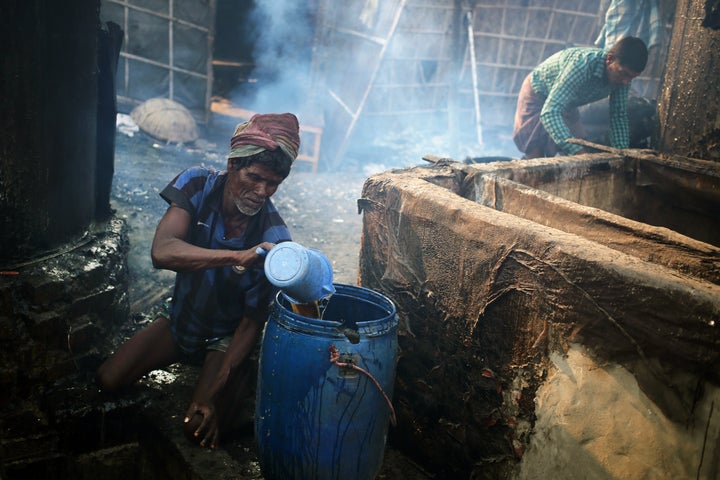
The complexity and sheer size of these systemic problems can seem nearly impossible to fix. But de Castro and Caspelich encourage us to push beyond the apathy that we may feel about something that seems larger than ourselves for the exact reason that environmental devastation does affect more than just us.
“We are all in the supply chain. The minute we buy something, we take responsibility for that object and the history it will have for itself after,” de Castro said.
“A single clothing item’s footprint indelibly molds our land, our water, our air — and each other,” Caspelich agreed.
So what then are practical steps we can make when consuming fashion moving forward?
“When you think about it, we already take quite a bit of time when looking for a product. We look for the size, color, style. What we now need to do as consumers is input a new kind of information: our research.”
De Castro told us what to look for in this research process.
“In my opinion, leather has to be 100% traceable, vegetable-dyed and treated without the use of chromium sulfate. But, nothing beats secondhand when it comes to leather because there’s so much around.”
Casepelich also said to be wary of greenwashing, a tactic that uses vague terms to appear more ethical to consumers.
“Unfortunately with the rise in popularity of the term ‘sustainable,’ many fashion brands have taken the public’s movement to invest in sustainable companies as an opportunity to cash in on people’s concern for the environment and the makers sewing their clothing. Here are a few ways to avoid the trap:
Is the brand using language in a way that markets itself as being environmentally and socially concerned without offering detailed stats and information to back it up?
Pay attention to a brand’s advertisement strategies. Are they using generic nature shots or stock images to depict their sustainability, or are they using imagery of their actual sourcing and manufacturing practices?
Are you able to find a brand’s stance on diversity and work culture on their website? Are you able to verify that they are taking action rather than just talking?
In terms of ethical leather jackets that are on the market now, Casepelich recommends Reformation as a good place to start.
“We love Reformation’s leather jackets ― they’re cool, classic and definitely made to last. While on the pricier side, they are an investment piece,” Caspelich said.
If you have more questions or want to know ways that you can support the sustainable fashion movement, Remake offers a guide and resources to assist. You can also see how well fashion brands are rated in their brand directory.
In the meantime, if you’re on the hunt for a leather jacket that you won’t feel guilty about adding to your collection, keep reading for the list below that includes jackets made from alternative materials, recycled leather and truly one-of-a-kind vintage pieces.
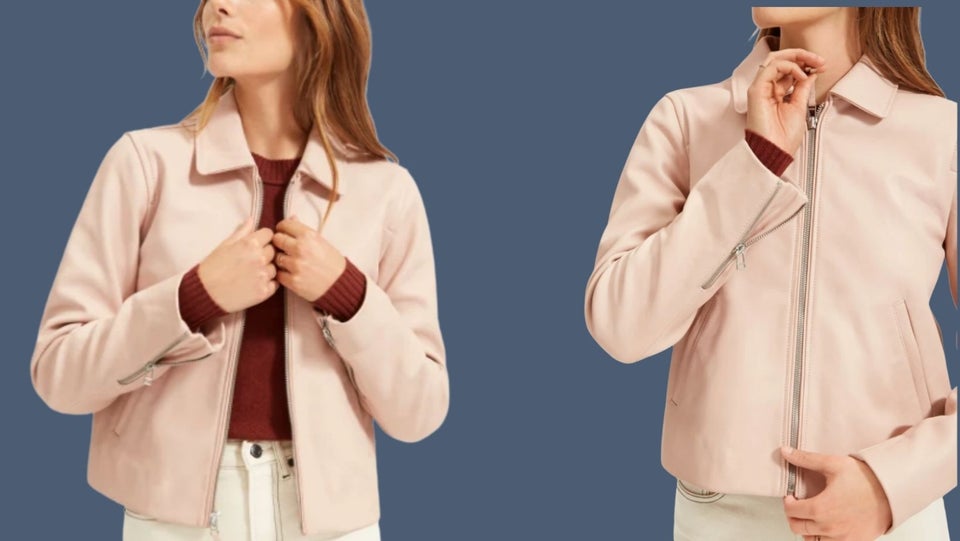
Get it from Everlane for $119.
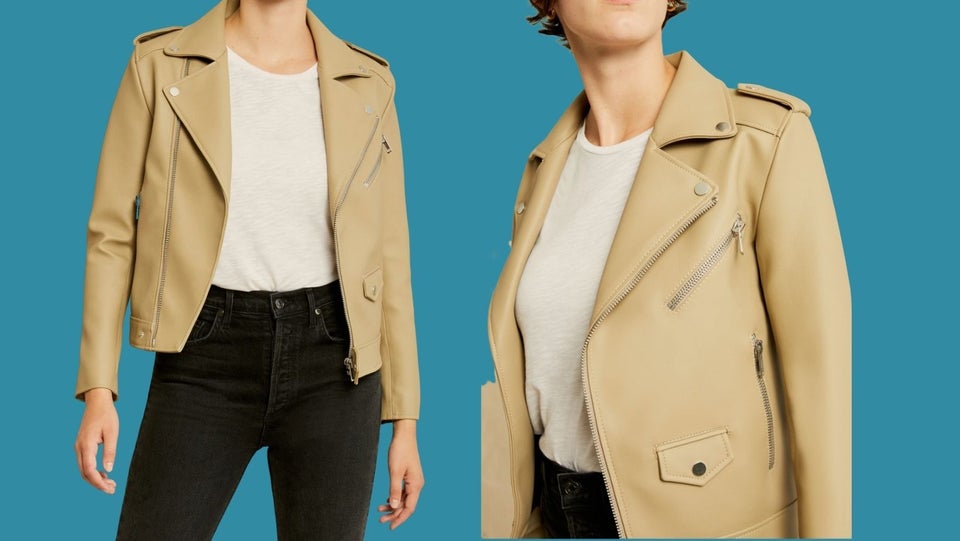
Get it from Amour Vert for $815.
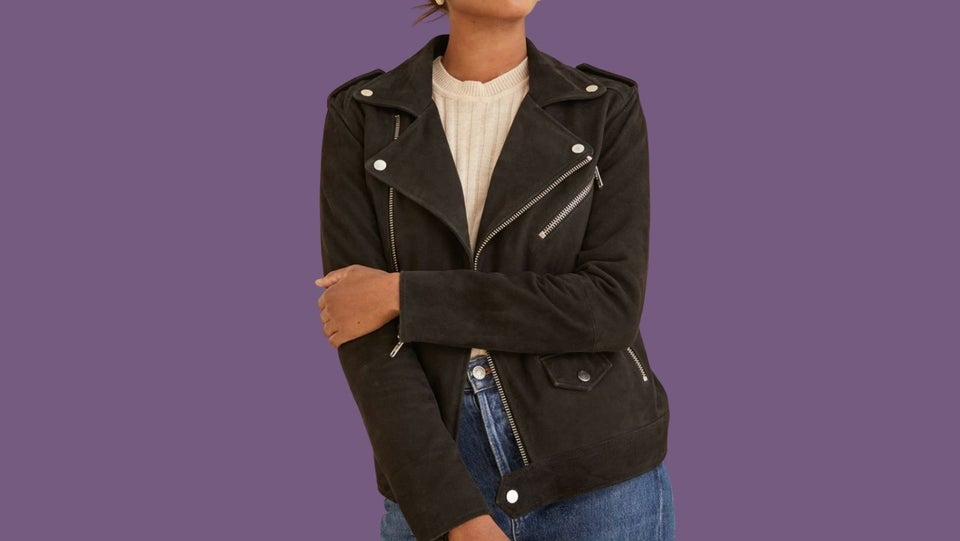
Get it from Amour Vert for $425.
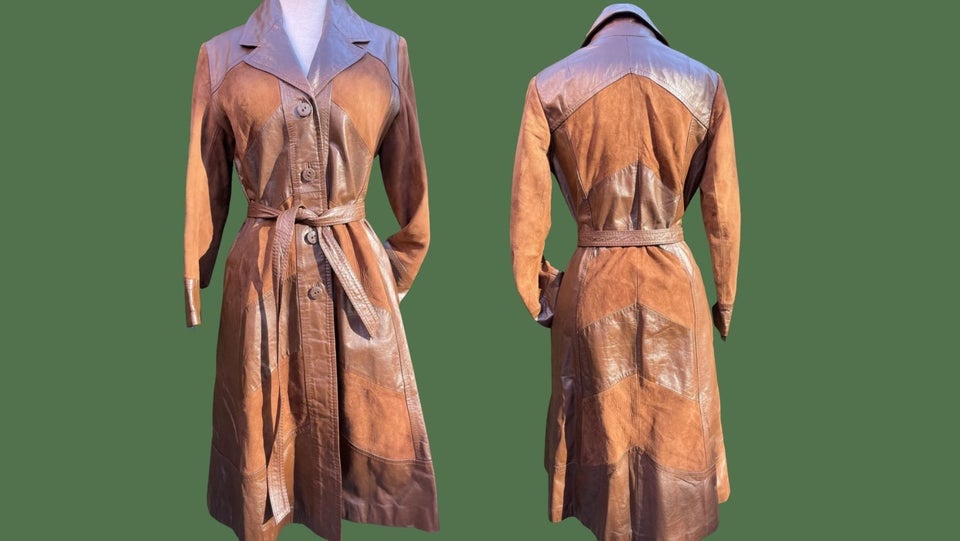
Because this is a one-of-a-kind piece, there is only one available. But you can shop a similar caramel belted trench and a tan minimalist trench, also on Etsy.
Get it from TheFjeld at Etsy for $112.50.
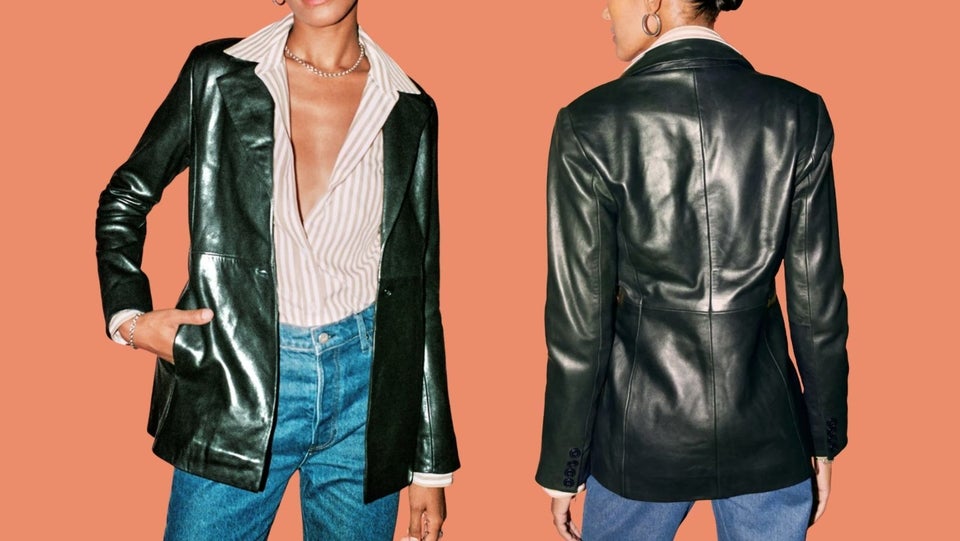
Get it from Reformation $398.
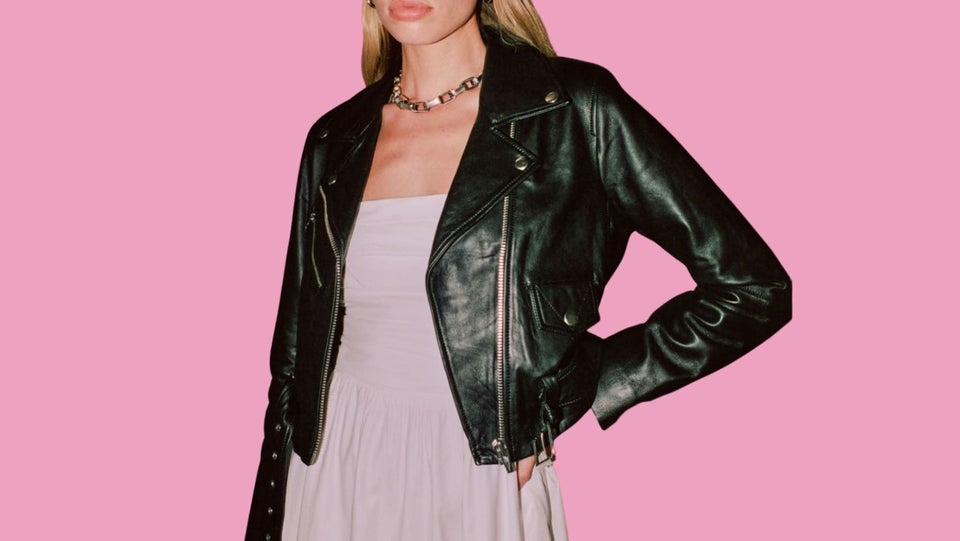
Get it from Reformation for $498.
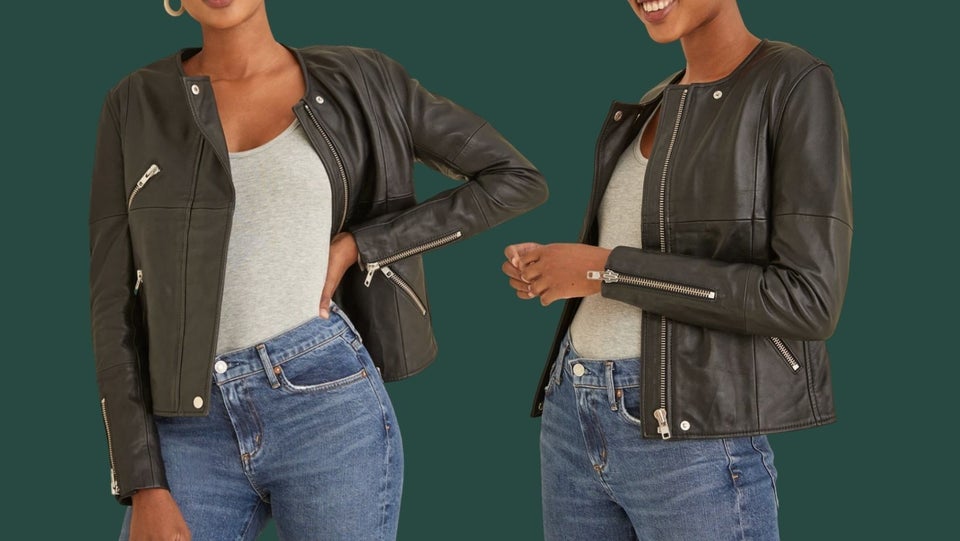
Get it from Amour Vert for $425.

Get it from Amour Vert for $455.
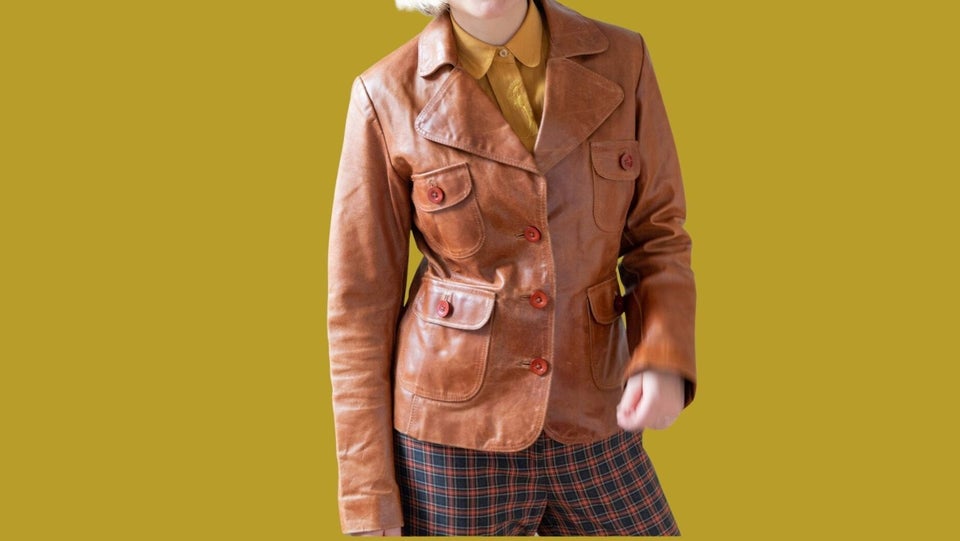
Because this is a one-of-a-kind piece, there is only one available. But you can shop a similar blazer, '70s jacket and an oversized brown jacket, also on Etsy.
Get it from PutOnVintage at Etsy for $102.22.
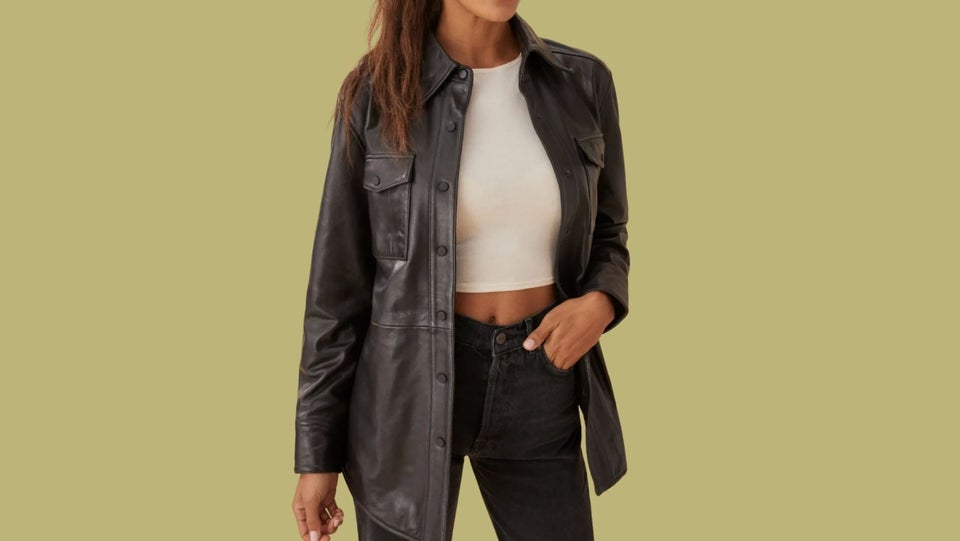
Get it from Reformation for $328.
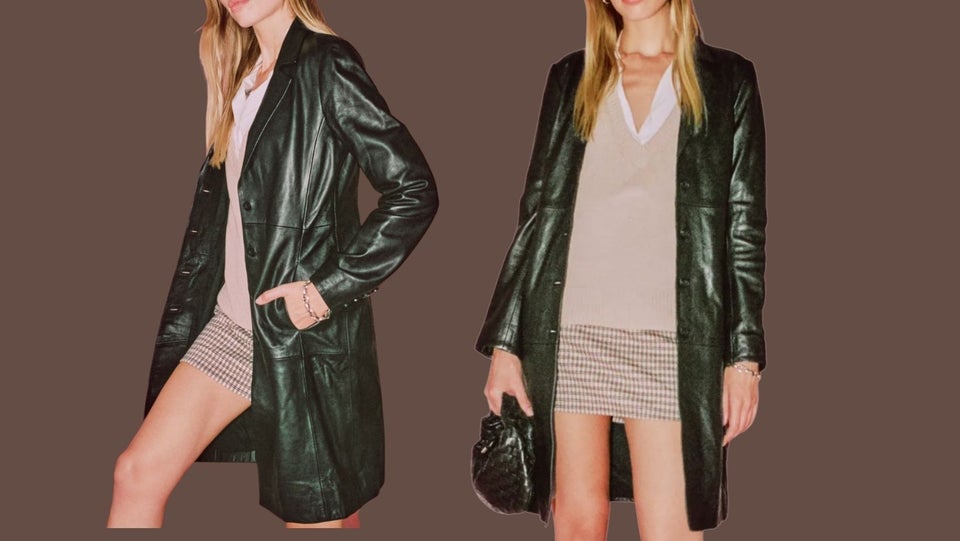
Get it from Reformation for $448.

Get it from Reformation for $348.60.